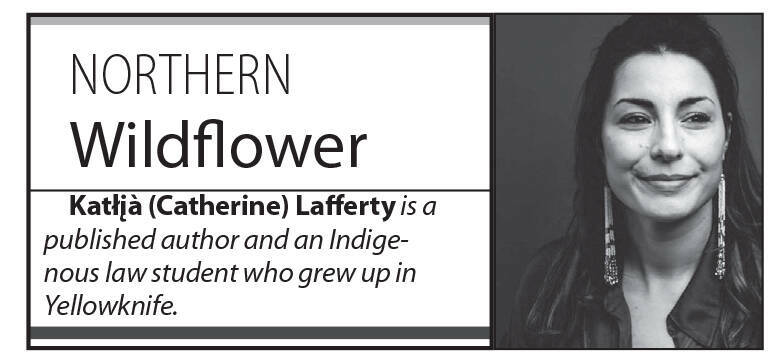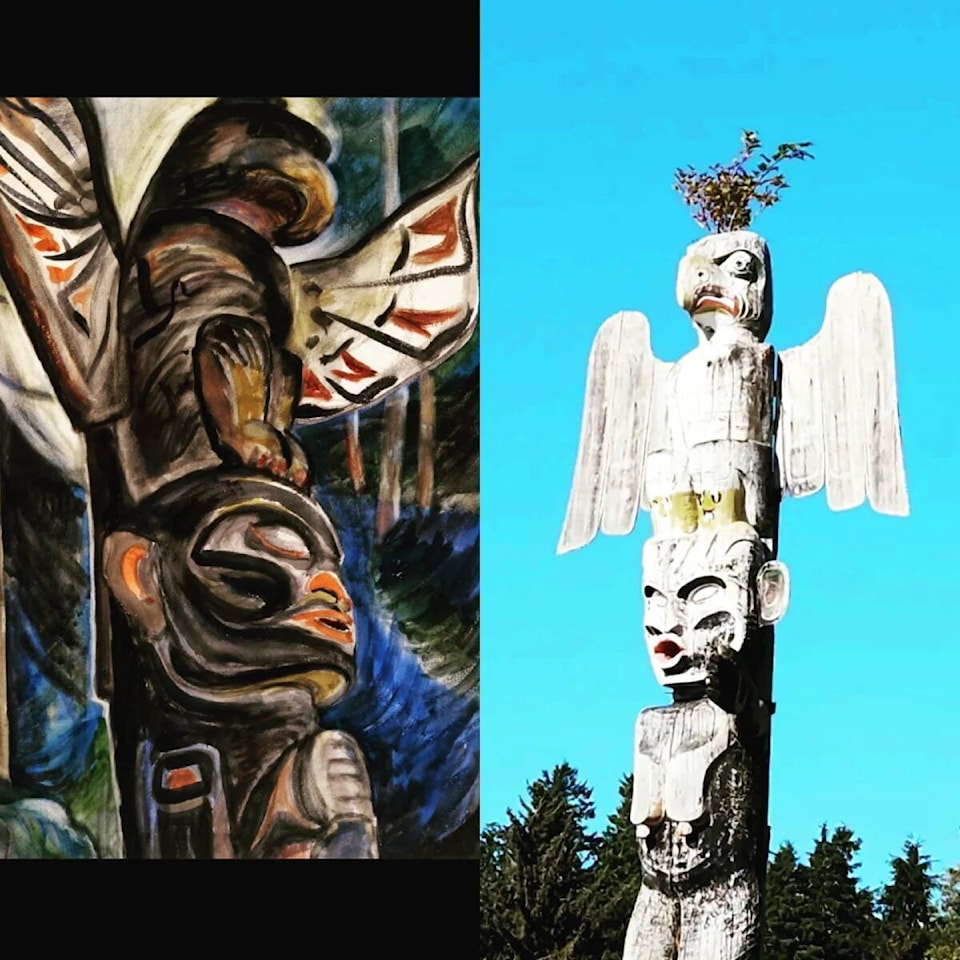Finally, I’m in my fourth and final year of law school and this semester our class got to be in a community on the northern tip of Vancouver Island for field school, where we were welcomed into the Big House.
The Big House is a place where the Kwakwaka’wakw gather. Before the turn of the century, extended families all lived under one big roof within their clan systems in the Big House, and it was there that they held ceremonial potlaches to mark significant events.

When our class first walked into the Big House in the village of Kwagu’l (Fort Rupert), we were greeted by a class of kindergarteners who had been patiently waiting to share their stories, customs and laws with us through dance. I was moved to tears with happiness watching their little footprints in the sand dancing around the fire telling their creation stories to the sound of the drum under four large totems holding up the house while the sun shone down on them through the open skylight like a giant strobe.
The practice of the potlach is a world within itself, and the complete opposite of the economic system we live in today. It is about giving away everything you have — the more you give, the richer you are. It is a brilliant system of governance and a far cry from our backwards colonial society where nearly everything we adhere to is driven by gain and greed.
Although it no longer houses people year-round for living, the Big House still contains oral histories, legends and laws of the Kwakwaka’wakw Peoples. The Big House is a place of sanctity, different from how many people in the western world live. Often we live in single-family dwellings without extended family and community to support and guide us in our personal journeys. Settler society has placed monetary value on housing as a commodity rather than a place of shared communal values. The potlach gives me hope that things don’t have to be so hierarchical and capitalistic, it gives us another way of looking at the world as we know it. The dedicated practice of ceremonial customs and belief systems that carry righteous principles for living is something to be admired considering that the potlach was once banned through efforts of eradication facilitated by the monarchy. The teachings were then passed underground for many years before they could resurface again safely.
Pole still stands strong
I have recently been invited to Emily Carr’s house to do a book reading for National Truth and Reconciliation Day/Orange Shirt Day this year. In preparation, I browsed through some of her art pieces then realized that Emily Carr painted the same totem back in the early 1900s that just so happened to be one of the first totems I looked up at when arriving at Namgis Nation (Alert Bay) on our second day out in the field. The pole still stands strong and on high alert, watching all who come and go from ocean to land.
In learning about Emily Carr’s life, I’m fascinated with her intentions and depictions of the Indigenous Peoples of the West Coast. She travelled often over treacherous and desolate locations just to get a glimpse of the magnificent beauty of the ancestral carvings. Did she have permission to do so? Would her work today be considered cultural appropriation? What sparked in her the urge to travel to such lengths? We know virtually nothing of who her mother was. Could she have been Metis? In reading her book Klee Wyck, I see her as an ally and a radical independent woman who challenged racism and religion, someone who gained the respect of the Kwakwaka’wakw enough to be able to visit their village sites and capture the essence of an entire culture in a single painting. Some of her work today is worth millions of dollars, yet the poles themselves do not have a price tag, they are priceless to the Kwakwaka’wakw Peoples. Emily Carr had no heirs, which leads me to think that her work should be given back to the Kwakwaka’wakw so that they may own the intellectual property rights since most of her work was largely informed by their creations.
Heavenly aromatic
During our field school, our class also explored the territory of the Mamalilikulla First Nation (Village Island). We left early enough that the ocean was so quiet you could hear the humpbacks’ tails meet with the surface of the water before diving deep. We floated through a thick fog that made me feel like we were on the edge of the world as the giant whales blew water from their spouts at every turn, to our delight. Later that day, we bathed in the cold water under the midday sun after listening intently to the chief tell us countless stories filled with place-based teachings.
We spent our last day on the shores of the Kwagu’l, where we learned how to conduct a pit cook. The pit on the beach was located in a large dugout close to the water. The fire was started early in the day by one of the community members to make sure the rocks had time to get good and hot, then it was our job to gather the plants. Salal leaves, sword fern and thimbleberry were placed over the hot rocks, where they sizzled wildly. Then we placed our root vegetables and salmon wrapped in skunk cabbage on the overlay and topped it with more layers of greenery and a large canvas that once would have been made out of bark.
Last but not least, we shovelled the rocks and dirt over top until there was nowhere for the steam to escape and there we let it sit for hours as we sat along the beach like shipwrecks in the sand waiting between naps and silly games of rock tossing, our tummies rumbling in anticipation for the moment we got to dig out our delicious feast. It was a group effort to uncover the food and we were lucky enough to also fill our plates with smoked eulachon – a fish highly sourced for its nutrient rich grease used as a gift in the potlach ceremony. Once the potatoes, pears and parsnips reached my mouth during the community gathering it was a heavenly aromatic that filled my heart and soul with gratitude, just like the land itself.
Gilakas’la!
